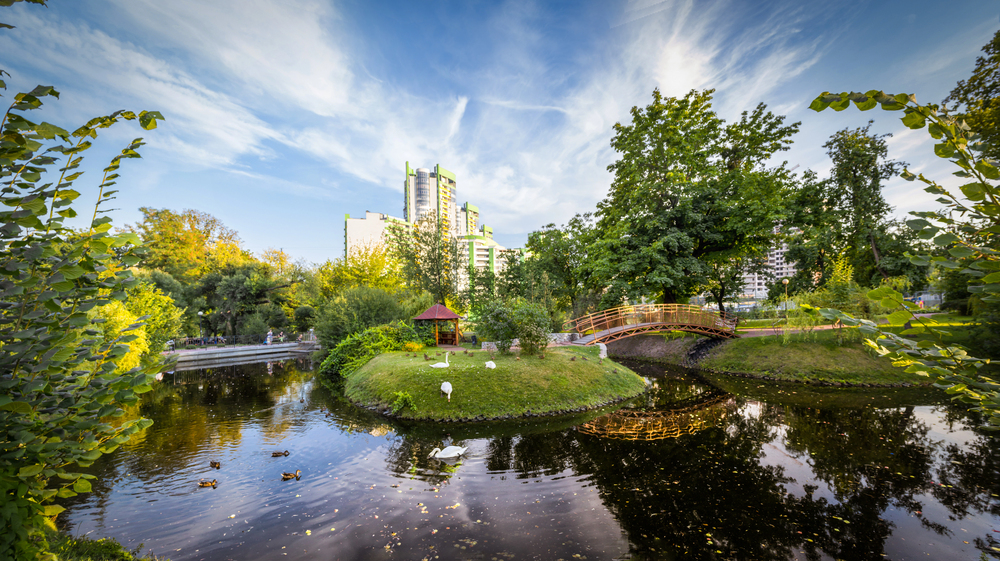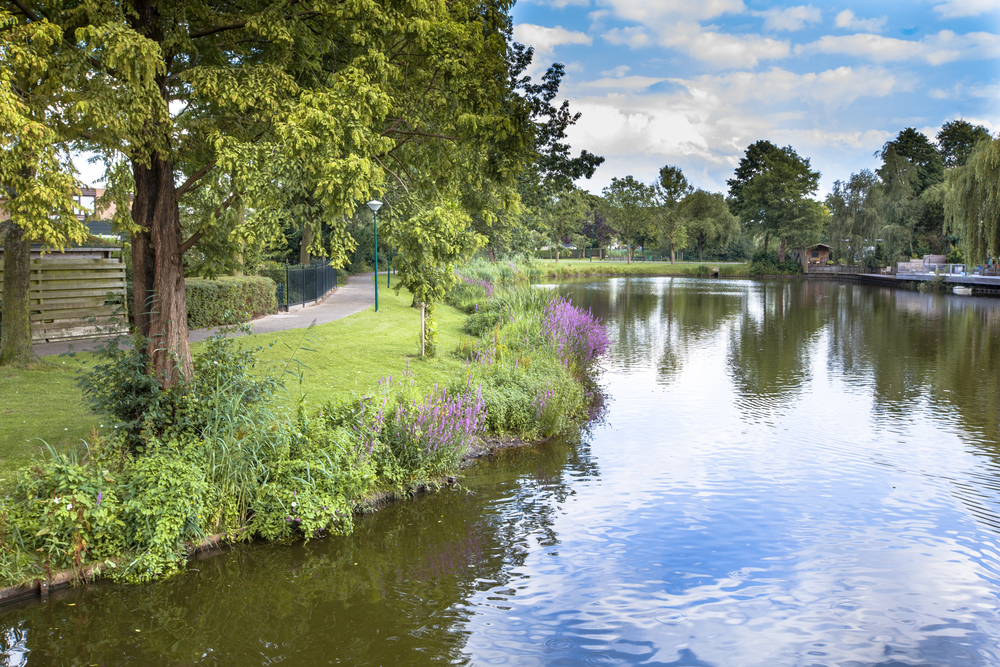Urban areas, often viewed as concrete jungles, can surprisingly support rich ecosystems for foraging fungi. Cities like Portland and San Francisco are notable for their favorable climates and diverse habitats, while Chicago and New York City provide unexpected foraging spots within their parks. Seattle’s vibrant mycological community further enhances the experience, offering resources for both new and seasoned foragers. Yet, which specific locations and conditions yield the most fruitful foraging experiences? Understanding these nuances can significantly enhance urban foraging endeavors.
Parks and Green Spaces

Urban parks and green spaces are essential for fostering diverse fungal ecosystems and provide foragers with convenient locations to explore. These biodiverse areas serve as important habitats for various fungal species, making their preservation vital as urbanization continues to grow.
Key features of urban parks and green spaces that enhance foraging opportunities include:
- Diverse Flora: A variety of plant species supports a rich fungal community, leading to an abundance of foraging options.
- Moist Microclimates: Shaded areas and proximity to water sources create ideal conditions for fungi to thrive.
- Minimal Disturbance: Less human interference in certain sections allows fungi to flourish undisturbed.
- Educational Programs: Many parks offer workshops and events that educate the public about local fungi, cultivating a community of informed foragers.
- Sustainable Practices: Efforts to maintain ecological balance contribute to the overall health of fungal populations.
Community Gardens
Community gardens play a significant role in fostering fungi in urban areas. These gardens create vibrant ecosystems that support diverse plant life, which in turn provides an ideal habitat for fungi. The relationship between cultivated plants and fungi enhances soil health, promotes biodiversity, and can yield edible mushroom species. In addition, these shared spaces encourage community engagement and a deeper appreciation for the natural world.
The following table highlights the key benefits of community gardens in relation to fungi:
| Benefit | Description |
|---|---|
| Biodiversity | Increases variety of plant and fungal species. |
| Soil Health | Improves nutrient cycling and microbial activity. |
| Community Engagement | Encourages collaboration and knowledge sharing about foraging. |
| Sustainable Practices | Promotes organic gardening methods that support fungi growth. |
| Education | Provides opportunities to learn about fungi and their ecosystems. |
Through these benefits, community gardens serve as valuable urban sanctuaries, enabling individuals to connect with nature while exploring the fascinating world of fungi. By supporting these spaces, urban dwellers can enjoy the freedom of foraging and contribute to ecological health and community unity.
Urban Forests and Nature Reserves
Urban forests play a significant role in supporting the foraging of fungi in metropolitan areas. These green spaces are essential ecosystems that harbor a diverse range of fungal species, thriving in the organic matter and microclimates created by trees and underbrush. Foragers in urban settings can discover various edible and medicinal fungi, enriching their culinary experiences and fostering a connection to nature.
Key benefits of urban forests that enhance foraging include:
- Biodiversity: A wide variety of plant and fungal life creates a vibrant habitat for foragers.
- Microclimates: Shade and humidity retention promote environments where fungi can thrive, especially after rainfall.
- Accessibility: Urban forests are typically situated within city limits, making foraging more convenient for residents.
- Community Engagement: These spaces provide opportunities for education and the sharing of knowledge about foraging practices.
- Sustainability: Urban forests support ecological balance, encouraging responsible foraging and stewardship of natural resources.
Abandoned Lots and Areas
Abandoned lots and areas serve as unexpected havens for fungi, providing rich environments where species can thrive away from urban development. These neglected spaces, often overrun with weeds and wild grasses, create a unique microclimate that nurtures diverse fungal growth. The decay of organic matter, including discarded materials and vegetation, acts as a nutrient source for various fungi.
Foragers seeking culinary adventure will find that these forgotten urban spaces often host a variety of edible fungi, such as chanterelles and morels, alongside intriguing non-edibles that reveal the complex ecosystem at play. The absence of manicured surroundings allows fungi to grow undisturbed, developing unique characteristics influenced by their environment.
However, foragers must exercise caution and verify that the collected fungi are free from contamination and identifiable, as some species can be harmful. By exploring these abandoned areas, enthusiasts can reconnect with nature and rediscover the freedom that comes from foraging in urban settings, embracing the bountiful treasures hidden in plain sight.
Street Trees and Sidewalks
Street trees and sidewalks offer surprising environments for foraging fungi in urban areas. These often overlooked spaces create unique microhabitats that support various fungal species. The combination of shade from trees and moisture from irrigation or rainfall fosters ideal conditions for mushrooms to grow.
Foragers can discover a variety of fungi in these locations, including:
- Oyster Mushrooms: Commonly found on decaying wood near tree bases.
- Chicken of the Woods: A vibrant, shelf-like fungus noticeable on hardwood tree trunks.
- Common Earthballs: Distinctive round fungi found near tree roots, though they are inedible and should be approached with caution.
Street trees enhance urban aesthetics and promote biodiversity. Foraging in these areas allows individuals to connect with nature and reclaim their surroundings. As city dwellers pursue self-sufficiency, recognizing the potential of street trees and sidewalks fosters a greater appreciation for urban ecology. With an adventurous spirit and the right knowledge, foragers can transform their city strolls into rewarding excursions.
Riverbanks and Waterfronts

Waterfront locations in urban areas offer great opportunities for foraging fungi, as they typically host a variety of species that thrive in humid conditions. The unique microclimates created by lakes, rivers, and ponds support rich ecosystems, allowing fungi to thrive. Foraging in these areas can yield both common edible varieties and rare, intriguing species.
Key benefits of foraging in waterfront locations include:
- Microhabitats: The diverse habitats near water can support different fungi, from marshy patches to shaded banks.
- Moisture Retention: Sustained moisture levels enhance fungal growth, especially during warmer months.
- Nutrient-Rich Substrates: Decaying plant matter and organic debris near water bodies provide important nutrients for fungi.
- Biodiversity: The interplay of aquatic and terrestrial ecosystems often results in a rich variety of flora and fauna, including diverse fungal species.
- Accessibility: Many urban waterfronts are publicly accessible, making foraging an easy and enjoyable experience.
Here are three fungi commonly found along urban riverbanks:
- Chanterelles: Known for their bright golden color and delicate flavor, these mushrooms often appear near hardwood trees.
- Oyster Mushrooms: These fan-shaped fungi thrive on decaying wood and are easily recognizable by their oyster-like appearance.
- Morels: A sought-after delicacy, morels can be found in the springtime, often hiding among leaf litter.
Seasonal Considerations
Foraging fungi in urban settings involves understanding seasonal factors that significantly influence fungal growth and availability. Recognizing these patterns can enhance your foraging experience and help you connect with nature amidst the urban landscape.
Spring marks the start of the fungal season, as warmer temperatures and increased rainfall create ideal conditions for mushrooms to thrive. This is when many sought-after species, such as morels, make their appearance. Summer brings heat that may limit some fungi’s development, but certain types, like chanterelles, flourish in damp environments.
Autumn is often the peak for foraging, with various species, including porcini and puffballs, maturing. Cooler temperatures and consistent humidity lead to an abundance of fungi. Winter foraging is more limited, but some hardy species, like certain polypores, can still be found, providing unique opportunities for adventurous foragers.
Being aware of these seasonal changes enriches your foraging endeavors and fosters a deeper appreciation for the balance of urban ecosystems, allowing you to embrace the freedom that comes with understanding nature’s cycles.



